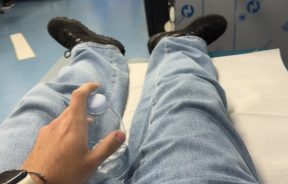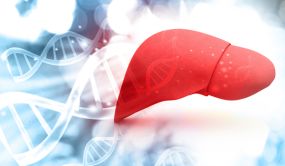Cancer Warning Signs: Early Cancer Symptoms You Should Never Ignore for Life-Saving Detection
Early detection of cancer saves lives by enabling timely treatment and better outcomes. Recognizing cancer warning signs and cancer symptoms early increases the chance of curing cancer and reducing complications. This article highlights the most critical early signs of cancer, symptoms by cancer type, common questions about early cancer detection, and the role of screening tests and prevention measures.
Common Early Warning Signs of Cancer
Unexplained Weight Loss and Appetite Changes
Significant unexplained weight loss (typically 5kg or more) may be an early warning sign of several cancers, including pancreatic, stomach, lung, and esophageal cancers. This may occur alongside decreased appetite or a feeling of fullness. Such changes should prompt medical consultation without delay.
Persistent Fatigue and Pain
Chronic fatigue that doesn't improve with rest and unexplained persistent pain in any part of the body can be indicative of early cancer or its spread. These cancer symptoms should never be ignored, especially if they worsen or are accompanied by other warning signs.
Skin Changes, Lumps, or Swelling
A new lump or swelling, particularly one that is painless and continues to grow, may be an early sign of cancer, such as lymphoma or skin cancers. Changes in skin color, sores that do not heal, itchy or tender areas, and changes in existing moles warrant prompt examination.
Recognizing Symptoms Based on Cancer Types
Breast Changes
Symptoms like lumps, nipple discharge, skin dimpling, or changes in breast size or shape are potential early indications of breast cancer. Regular self-examinations and screening mammograms aid in early detection, particularly for high-risk groups.
Changes in Bowel or Bladder Habits
Persistent constipation, diarrhea, or blood in stool or urine are important cancer warning signs related to colorectal or bladder cancers. Early evaluation of these symptoms is essential to exclude or confirm cancer.
Persistent Cough, Hoarseness, or Shortness of Breath
Ongoing respiratory symptoms, including cough lasting more than three weeks, hoarseness, or unexplained shortness of breath, primarily if associated with coughing up blood, may indicate lung or throat cancers.
Oral Changes or Sores That Don't Heal
Sores in the mouth or unusual white or red patches that fail to heal within two weeks can be early signs of oral cancers. Additionally, pain when swallowing or neck lumps require immediate medical attention.
Key Symptoms That Require Immediate Attention
- Unexplained lumps or swelling anywhere in the body
- Unusual bleeding or discharge not linked to a known cause
- Persistent and unexplained pain
- Changes in skin appearance or moles that evolve over time
- Prolonged coughing or hoarseness
- Difficulty swallowing or persistent indigestion
The Role of Screening and Tests in Early Detection
Cancer screening programs have revolutionized early cancer detection and are crucial for identifying cancer in its nascent stages when it is most treatable, according to the National Institutes of Health. Established screening tests include mammograms for breast cancer, Pap smears and HPV testing for cervical cancer, colonoscopy for colorectal cancer, and low-dose CT for lung cancer in high-risk individuals.
Advancements in screening technology, such as digital breast tomosynthesis (DBT), have demonstrated superior detection rates for breast cancer compared to traditional mammography, particularly in women with dense breast tissue. These innovations reduce false positives and facilitate the diagnosis of cancers at earlier stages, potentially reducing aggressive treatment needs.
Multicancer early detection (MCED) tests that analyze blood samples for cancer-associated biomarkers are emerging as promising tools to complement existing screening. While still under clinical evaluation, these tests detect multiple cancer types from a single blood draw, offering hope for early diagnosis of cancers without standard screening protocols.
Patient navigation services employing community health workers have been shown to improve screening adherence significantly, helping reduce disparities across populations.
Preventive Measures and Regular Screenings
Routine screenings are recommended based on individual risk factors such as age, family history, and lifestyle. Lifestyle modifications, such as avoiding tobacco and excessive alcohol use, maintaining a healthy diet, engaging in regular physical activity, and protecting the skin from excessive ultraviolet exposure, reduce cancer risk.
Public health initiatives continue to emphasize vaccination against oncogenic viruses like HPV and hepatitis B to prevent cervical and liver cancers, as per the World Health Organization.
Recognizing and never ignoring early cancer warning signs like unexplained weight loss, persistent lumps, unusual bleeding, or persistent fatigue and cough is vital for early cancer detection. Advances in screening technologies and preventive strategies further enhance early diagnosis and survival. Timely medical consultation for persistent symptoms is critical to improve outcomes and save lives.
Frequently Asked Questions
1. How often should different types of cancer screenings be done for average-risk individuals?
Different cancer screenings have recommended frequencies depending on the type of cancer and individual risk factors. For example, mammograms for breast cancer are generally recommended every 1 to 2 years for women aged 40 to 74. Cervical cancer screening using Pap and HPV tests is usually done every 3 to 5 years for women aged 25 to 65.
Colon cancer screening with colonoscopy often occurs every 10 years starting at age 45, and annual low-dose CT scans are advised for lung cancer screening in high-risk smokers aged 50 to 80. Regular adherence to recommended screening intervals is vital for early cancer detection.
2. Are there any new or emerging cancer screening methods that can detect multiple cancers at once?
Yes, multi-cancer early detection (MCED) tests, typically based on biomarker analysis of blood samples, are emerging technologies that aim to detect multiple cancer types in a single test. These blood-based tests analyze specific cancer-related molecules and patterns to screen for multiple cancers simultaneously. While promising, they are still undergoing clinical validation and are intended to complement, not replace, current standard screenings.
3. Can lifestyle changes alone prevent all cancers, or is screening still necessary?
While lifestyle changes such as avoiding tobacco, maintaining a healthy diet, regular physical activity, and vaccination against cancer-causing viruses reduce the risk of many cancers, they cannot eliminate the risk. Some cancers develop without clear lifestyle risk factors. Early detection through regular screenings remains critical for identifying cancers at an early stage, when treatment is more effective.
4. What should a person do if they notice a possible cancer warning sign but have no family history of cancer?
Even in the absence of a family history, any persistent or unusual symptom, such as lumps, unexplained weight loss, bleeding, or skin changes, should prompt a medical evaluation. Many cancers occur sporadically without inherited risk. Early medical consultation enables proper diagnostic testing, timely referral, and a better chance of successful treatment if cancer is detected.




























